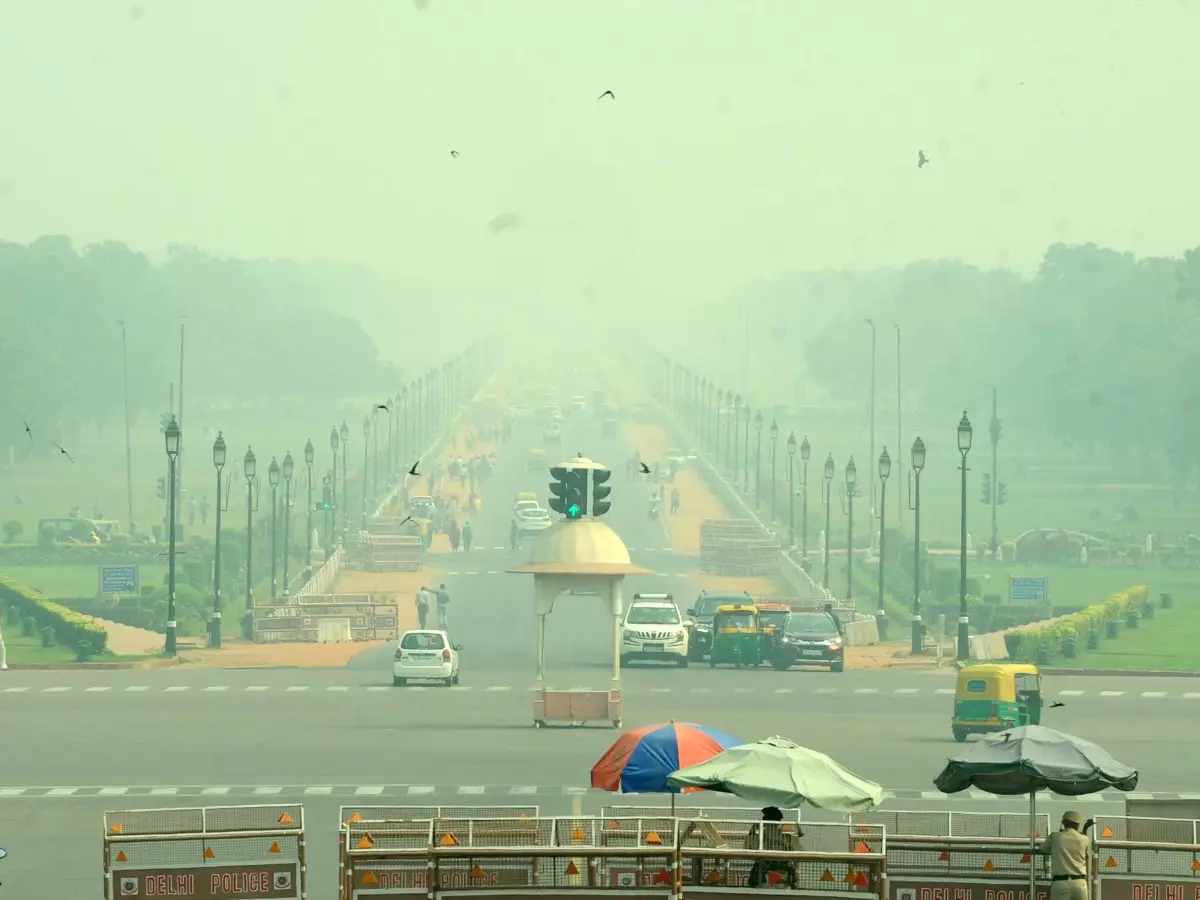Day Before Diwali, Smog Covers Delhi's Sky As Air Quality Slips To 'Poor' Category
In September, the Delhi government had imposed a complete ban on the production, sale and use of all types of firecrackers till 1 January - a practice it has followed for the last two years.

A day before Diwali, the national capital woke up with the blanket of smoke as air quality remained in the "poor" category. According to the Central Pollution Control Board (CPCB), the city recorded an Air Quality Index (AQI) of 2 at 6 am.
Delhi's air quality
An AQI between zero and 50 is considered good, 51 and 100 satisfactory, 101 and 200 moderate, 201 and 300 poor, 301 and 400 very poor, and 401 and 500 severe.
Visuals from near the Akshardham Temple in east Delhi showed poor visibility as vehicles drove through smog.
Air quality in the national capital has been deteriorating over the past couple of days. And, especially with the Diwali festival around, the city's air quality has continued to deteriorate. Last evening, the AQI in overall Delhi was at 266. The air quality in the Delhi University area was in the "very poor" category at 327.
 BCCL/Representational Image
BCCL/Representational Image
Measure to control pollution
Now, in a bid to control pollution levels in the city, the Delhi government has announced that people who burst firecrackers in Delhi during Diwali will face up to six months in jail and Rs 200 fine.
In September, the Delhi government had imposed a complete ban on the production, sale and use of all types of firecrackers till 1 January - a practice it has followed for the last two years.
Environment Minister Gopal Rai on Wednesday said that anyone found storing or selling fireworks will face a fine of up to 5,000 rupees and three years jail.
 BCCL/Representational Image
BCCL/Representational Image
AQI can worsen to go up to 400
Every year, Delhi's pollution level spikes up from October and lasts till the end of fall due to various reasons such as the burning of stubble, smog, etc.
According to SAFAR, if stubble burning increases gradually, which is likely, its share in Delhi¡¯s PM2.5 (based on the average temporal variability of fire counts in the previous years) is likely to be 5% on October 23, 8% on October 24 and 16-18% on October 25.
 BCCL
BCCL
Under a zero firecracker emission scenario, the level of PM2.5 is predicted to be in the very poor category on Diwali. However, with adverse weather conditions leading to bring firecracker related pollution from adjacent regions of Delhi (outside NCT), 15-18% stubble contribution, without any load of Delhi firecracker emissions, AQI is predicted to touch the upper end of very poor to lower end of severe on October 25. And if an additional fire cracker load of 25% is added along with background emissions, then AQI is predicted to worsen to severe category crossing AQI of 400 on Diwali and a day after Diwali.
For more on news and current affairs from around the world please visit Indiatimes News.
